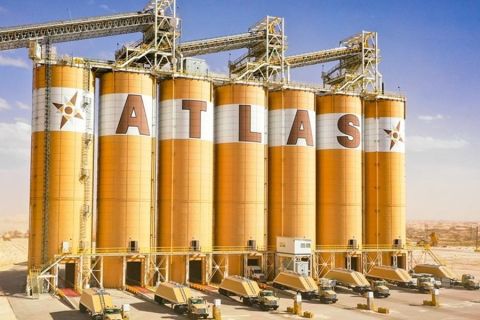
Silhouette of a wellhead in an oil field at sunset. (Source: Shutterstock.com)
[Editor's note: Opinions expressed by the author are their own. This story originally appeared in the December 2019 edition of E&P. Subscribe to the magazine here.]
The U.S. produces more oil and gas than ever before, having surpassed Russia and Saudi Arabia to become the world’s largest crude producer in 2018, with production in Texas alone exceeding that of Iran and Iraq combined. The energy industry’s employment outlook is unlike any other, where rank-and-file employees—many with just a high school education—make a median salary of nearly $200,000 per year. The efficiency gains in drilling have directly impacted the rig cost, sending prices lower than ever.
These developments are fascinating and should be indicative of exciting times in the oil industry. Yet the industry’s nature of boom and bust cycles cannot be forgotten. After all, it is a business of depleting resources. What happens when it is not economically feasible for an operator to continue working, especially during a bust?
With success comes inherent responsibility: the responsibility to be a good steward of resources, especially when closing down a facility. This means post-operations cleanup is necessary, with oversight from local regulators. The oil and gas industry already believes this, which is why companies overwhelmingly support independent third party inspection and verification. The time and human resources it takes to close out operations hurt the industry.
If well plugging and abandonment (P&A) are burdensome and time-consuming, operators lose incentive to complete work on time and in adherence to regulations.
According to Texas’ oil and gas regulator, the Railroad Commission (RRC) of Texas, the state has at least 10,000 known orphaned wells; however, only about 1,500 are plugged per year. Perhaps this is because, according to the RRC’s own records, it takes nearly 28 days on average for approvals. These approvals are necessary to ensure that the plugging has occurred at the correct depths, thereby ensuring that no chemicals or metals are leached into the water tables.
Taking a month to gain approval is unacceptable. What if that time could be compressed to one day? Ten thousand wells is a lot of “knowns.” But here’s the catch—that was 2017. Today RRC Commissioner Ryan Sitton notes that the state has 440,000 active wells and 130,000 inactive wells. How many of those vertical wells will be plugged soon?
The state should absolutely follow the current methodology of validating depths, verifying cementers to perform work and ensuring that water tables are not damaged.
But the antiquated process of having inspectors handwrite their reports on paper and then, eventually, submit them through PDF uploads and email over and over again has to change.
Think about how often mobile devices are relied on to make personal lives more efficient, from instantaneous communication to ordering dinner with a few taps. Embracing the speed at which technology is changing our personal lives by bringing consumer-grade technology onto the well site and leveraging what is already in our operators’ pockets are a must.
As an industry, these historically laborious, drawn-out processes must be made more efficient. There should be a “single pane of glass” that brings the various data silos into the pocket of the operator. All of this can be done without the operator even realizing that they are submitting documentation. From a safety perspective, the RRC could restrict access to approved cementers.
Mobile technology has fundamentally changed our lives for the better. It’s time that regulators harness it to improve and accelerate how P&A is done for the safety and well-being of people and the nation.
Recommended Reading
Fire Closes Atlas Energy’s Kermit, Texas Mining Facility
2024-04-15 - Atlas Energy Solutions said no injuries were reported and the closing of the mine would not affect services to the company’s Permian Basin customers.
Coalition Launches Decarbonization Program in Major US Cities, Counties
2024-04-11 - A national coalition will start decarbonization efforts in nine U.S. cities and counties following a federal award of $20 billion “green bank” grants.
Exclusive: Scepter CEO: Methane Emissions Detection Saves on Cost
2024-04-08 - Methane emissions detection saves on cost and "can pay for itself," Scepter CEO Phillip Father says in this Hart Energy exclusive interview.
Majority of Recent CO2 Emissions Linked to 57 Producers - Report
2024-04-03 - The world's top three CO2-emitting companies in the period were state-owned oil firm Saudi Aramco, Russia's state-owned energy giant Gazprom and state-owned producer Coal India, the report said.



